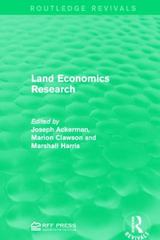Question
Text problem Chapter 14 (p. 349) Questions 1, 2 and 3: Suppose that two firms compete in quantities (Cournot) in a market in which demand
Text problem Chapter 14 (p. 349) Questions 1, 2 and 3: Suppose that two firms compete in quantities (Cournot) in a market in which demand is described by: P = 260 2Q. Each firm incurs no fixed cost but has a marginal cost of 20. (a) What is the one-period Nash equilibrium market price? What is the output and profit of each firm in this equilibrium?
(b) What is the output of each firm if they collude to produce the monopoly output? What profit does each firm earn with such collusion?
(c) If one firm decides to cheat on the collusion, assuming that the other firm will continue to produce its half of the monopoly output, how much will the cheating firm produce? What will be the industry price and the deviating firm's profit in this case?
(d) Suppose that the market game described above is now repeated indefinitely. Show that the collusive agreement can now be maintained so long as the probability-adjusted discount factor is R > 0.53.
Text problem Chapter 14 (p. 349-350) Question 4, 5, and 6: Suppose again that the market demand is given by: P = 260 2Q and that the two firms again have a constant marginal cost of 20, while incurring no fixed cost. Now, however, assume that the two firms compete in prices (Bertrand) and have unlimited capacity.
(a) What is the one-period Nash equilibrium market price? Assuming that firms share the market evenly any time they charge the same price, what is the output and profit of each firm in this market equilibrium?
(b) What will be the equilibrium output and profit of each firm if each agrees to charge the monopoly price?
(c) Assume that the cartel is established at the monopoly price. Suppose one firm now deviates from the agreement assuming that its rival continues to charge the monopoly price. Given the deviating firm's assumption, what price will maximize its profit of the other firm? How much will the profit of this cheating firm be? How much will be the profit of its non-cheating rival?
Step by Step Solution
There are 3 Steps involved in it
Step: 1

Get Instant Access to Expert-Tailored Solutions
See step-by-step solutions with expert insights and AI powered tools for academic success
Step: 2

Step: 3

Ace Your Homework with AI
Get the answers you need in no time with our AI-driven, step-by-step assistance
Get Started


